
Plants are really important for the planet and for all living things. It is a well known fact. Plants absorb carbon dioxide and release oxygen from their leaves, which humans and other animals need to breathe. Plants even have a role in biogeochemical process which are essential to life. We need them.
Since the quarantine started there are a lot of people who started their own mini garden or plant more. My mother really loves planting and since we got some spare time, my youngest brother and I decided to mess around my mother's hobby and her little place.
Today, I wanted to show you some of our plants in our garden. Most of it was planted by my mother, some of it was planted by my parents when we were about to move in to this house which means many years ago and few of it by me with the help of my younger brother. So, without a further a do, dive in and I'll show you.

Common name: Indian Tree
Scientific name: Polyalthia longifolia
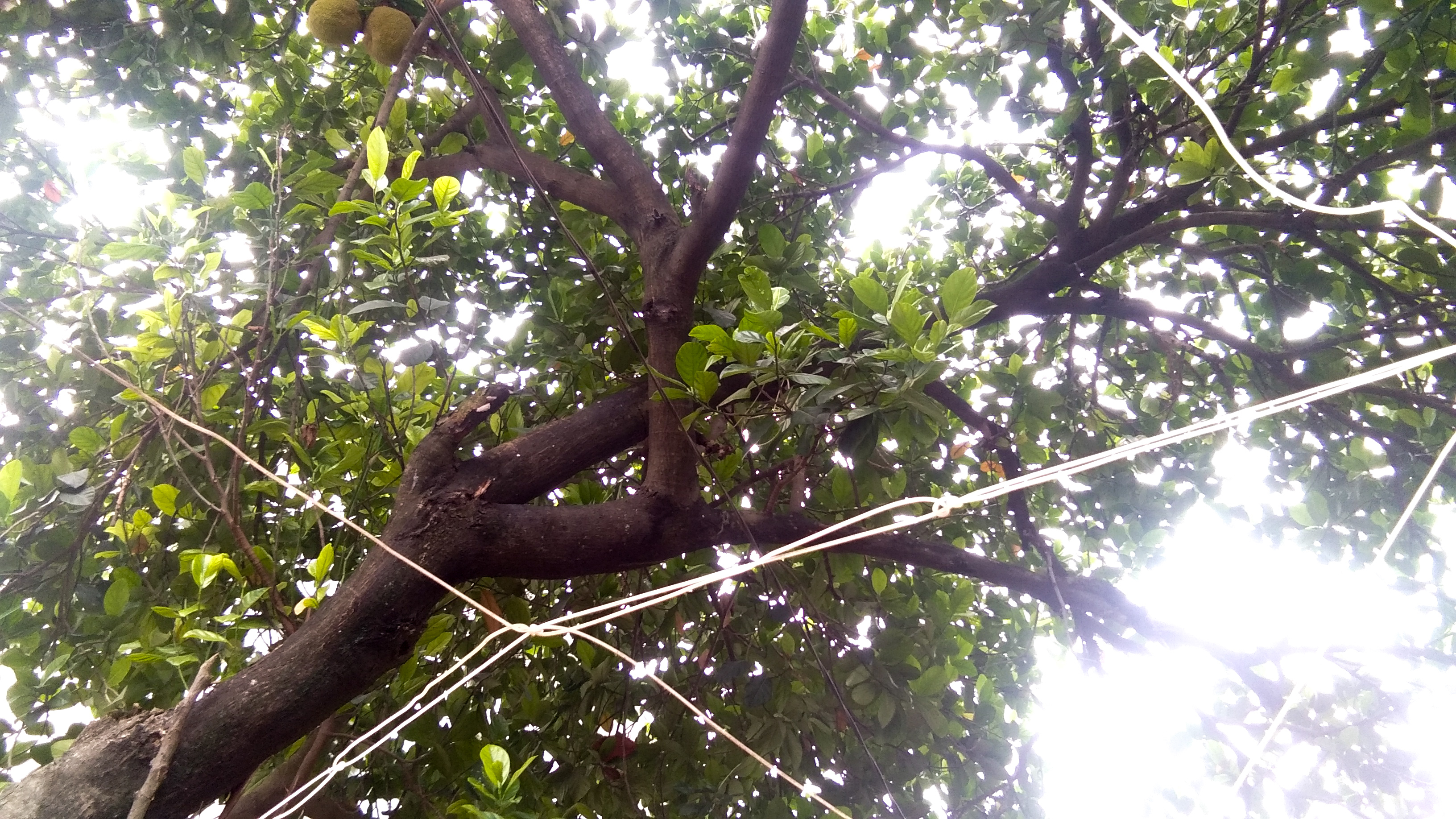
Common name: Jackfruit Tree
Scientific name: Artocarpus heterophyllus



Common name: Indian Tree
Scientific name: Polyalthia longifolia
Our Indian tree was planted back on around 2004, the seeds was given by my father's brother-in-law and we have 8 Indian trees which are situated in the East so that it will protect us from too much sunlight during summer. My father sometimes trim it so that it won't grow too tall.
According to stuartxchange.com, Polyalthia derives from the Greek words poly meaning "many" and altheo meaning "cure." Polyalthia longifolia is a small- to medium-sized evergreen tree growing up to 15 meters. Young plants have straight trunks and weeping pendulous branches, longest at the base and shorter at the end of the trunk.. Leaves are long, narrow and oblanceolate, dark green, glossy and wavy margins. Flowers are delicate pale green with wavy petals. Fruits are ovoid, black when ripe.

Common name: Jackfruit Tree
Scientific name: Artocarpus heterophyllus
Just like to our Indian tree, this was planted years ago. When I was a kid, me and my brothers climbed that tree and try to check the fruit or just wanted to be up there even if my parents keep on warning us about it. One day, both of my parents were off to somewhere and my younger brother decided to climb. Unfortunately, he fell from 4 meters high and his body hits some branches of the tree before reaches the ground. When he managed to stand, he had a nosebleed and I handed him a towel and it was fully covered with blood and then we noticed that he got some red bumps in his back. It was a rash from a hairy catterpilar so he rushed to our comfort room to take a bath and told us not to tell our parents about what happen.
We have also tasted the fruit many times and I must say that it is very tasty and different to any other fruit. The jackfruit texture is not dissimilar to a banana, mango, or pineapple in terms of being dense and fibrous. But the taste is quite distinctive. Some say it's sweet, and some say a jackfruit has a flavor similar to pulled pork, especially when cooked.
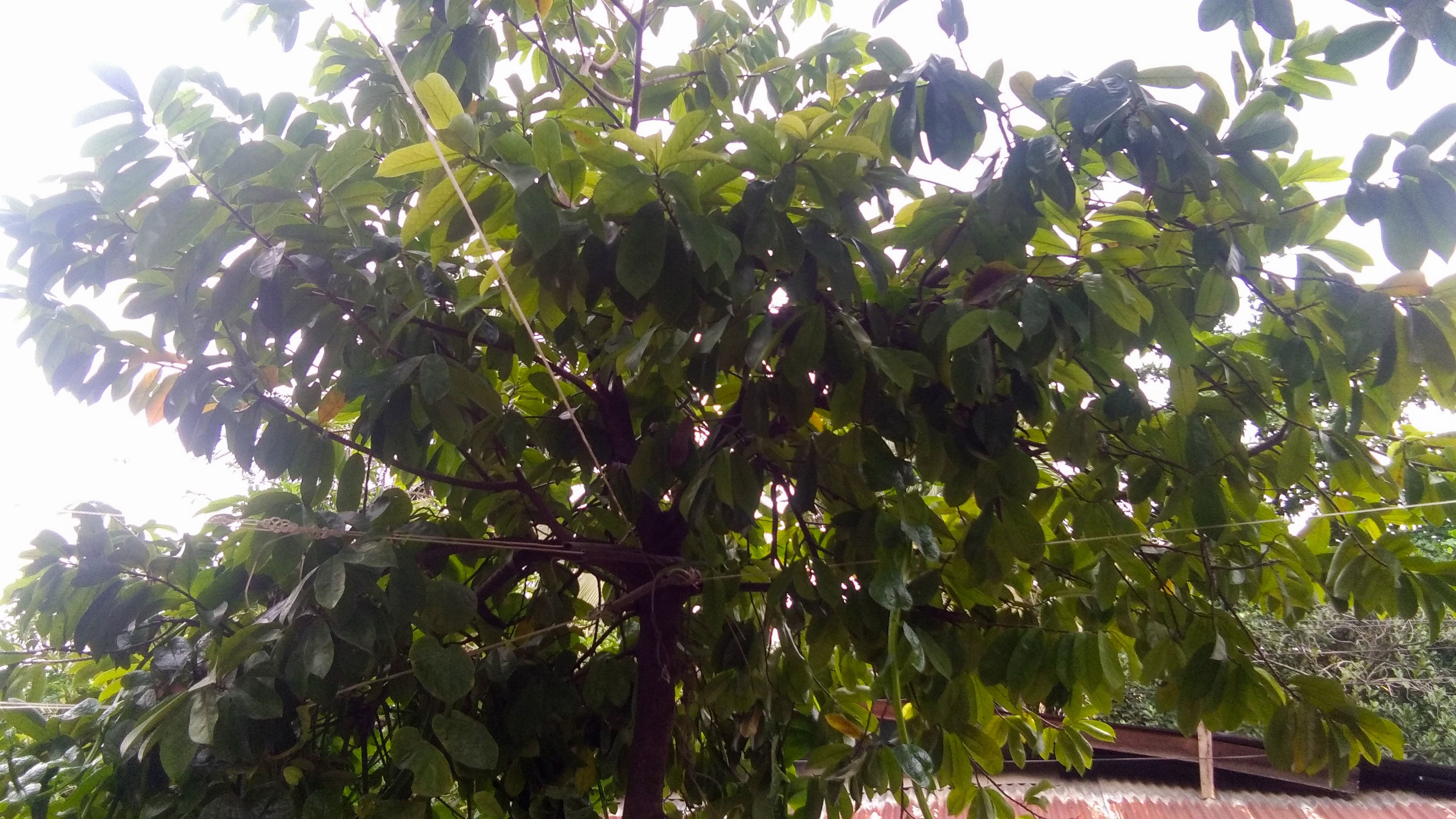
Common name: Soursop Tree
Scientific name: Annona muricata L.
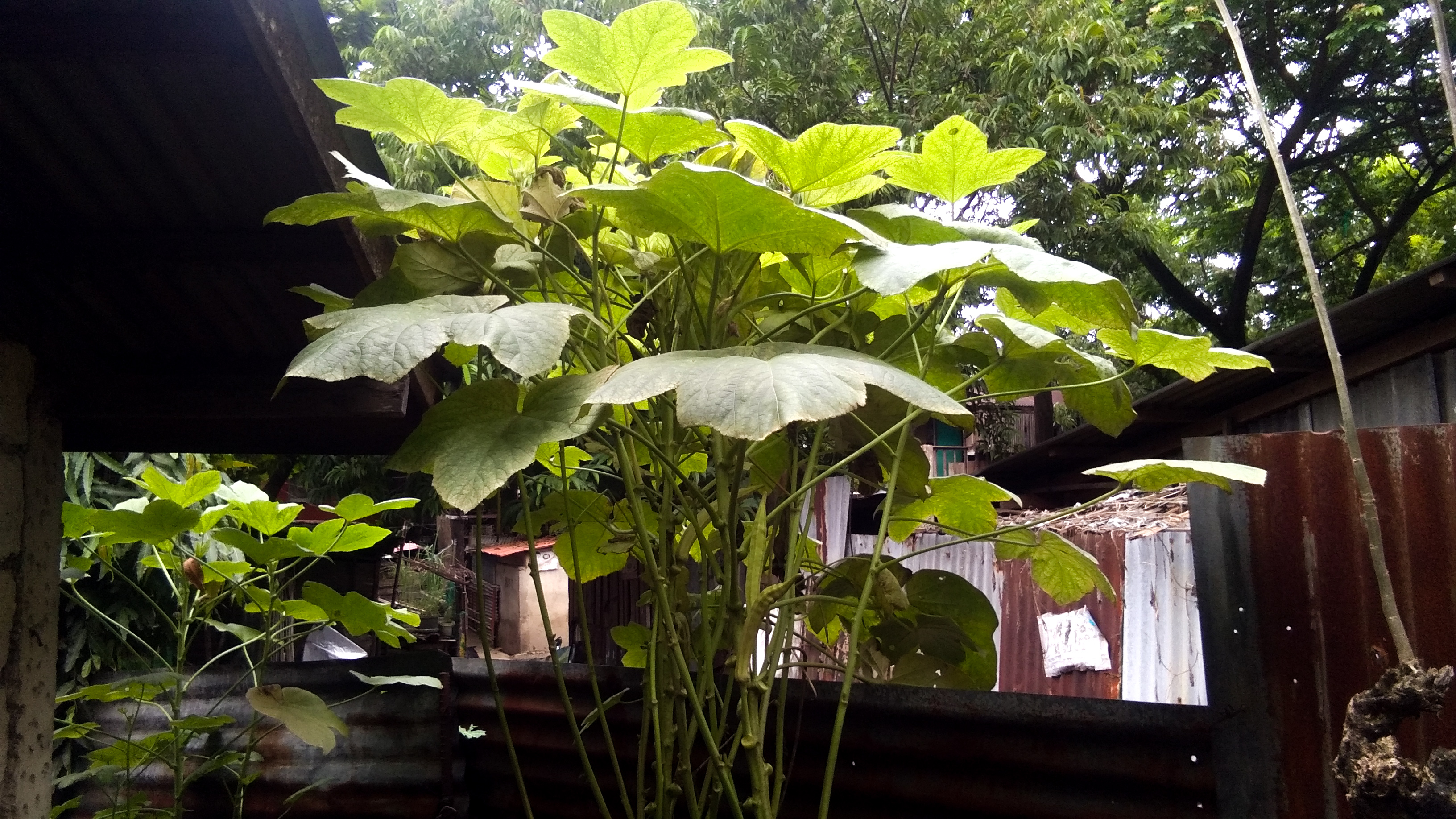
Common name: Lady's Fingers plant
Scientific name: Abelmoschus esculentus
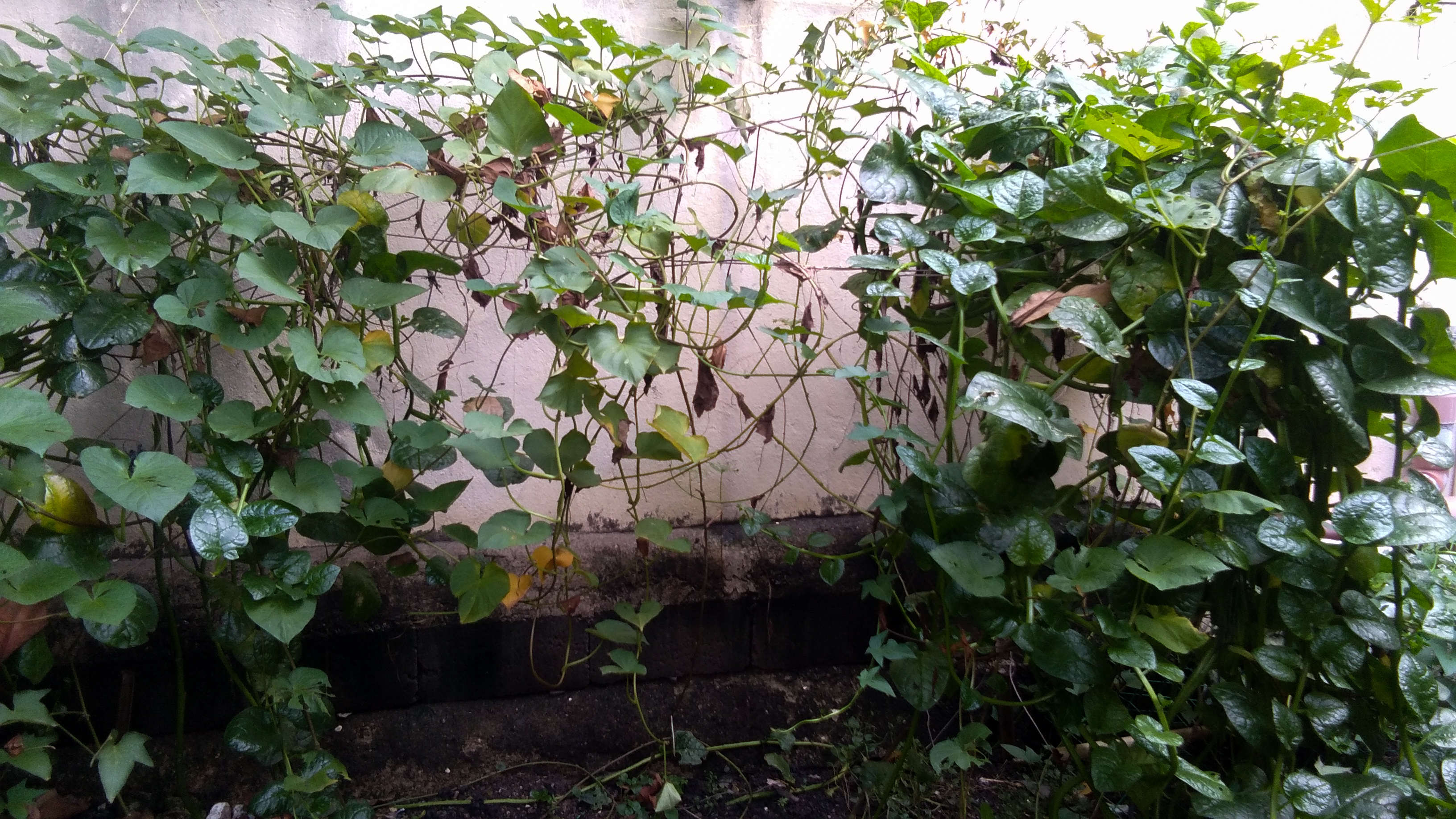
Common name: Sweet Potato
Scientific name: Ipomoea batatas
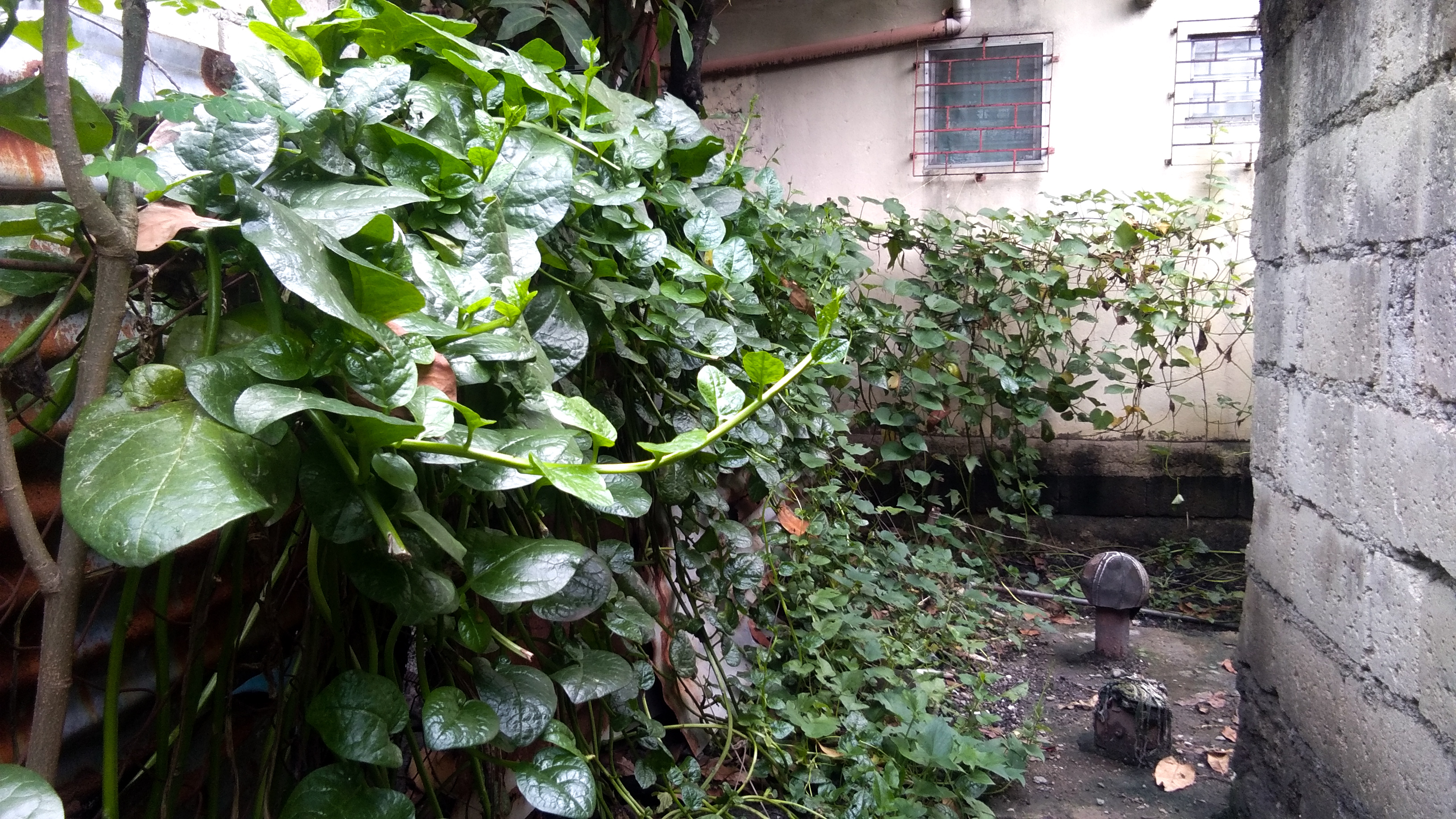
Common name: Alugbati
Scientific name: Basella alba
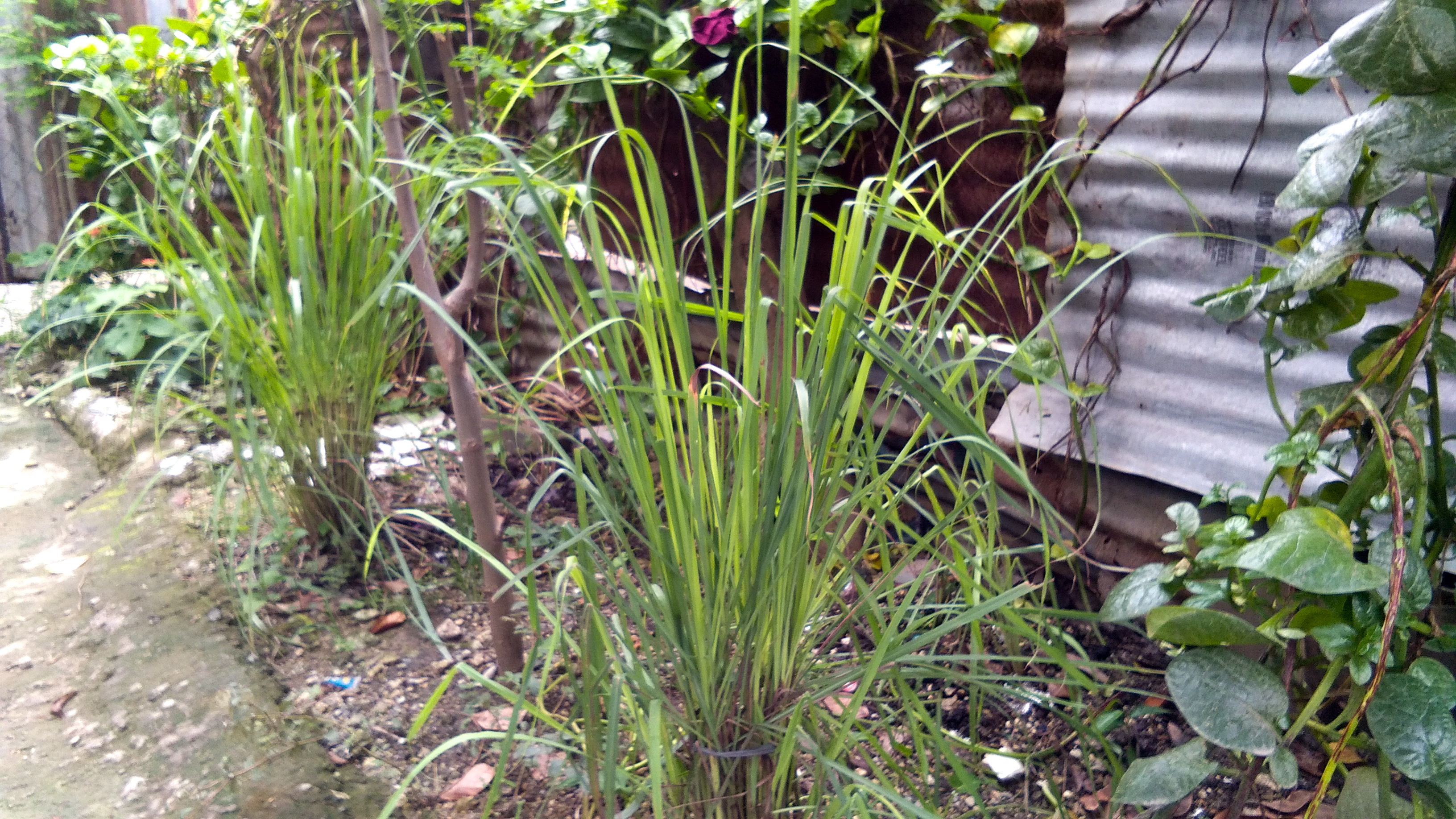
Common name: Lemon grass
Scientific name: Cymbopogon citratus
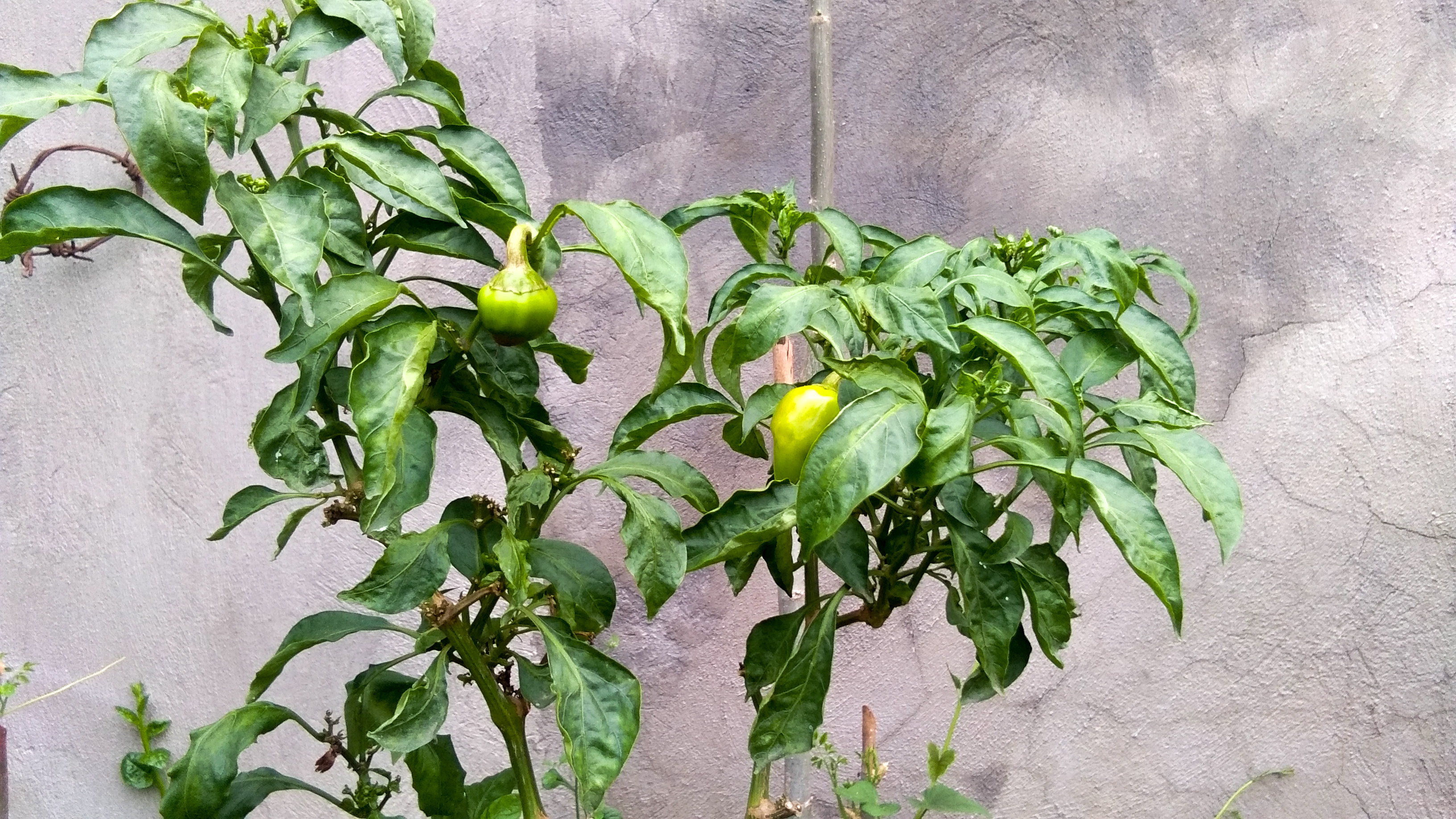
Common name: Mini bell peppers
Scientific name: Capsicum annuum
Common name: Malunggay, Moringa, Horseradish
Scientific name: Moringa olifera



According to Britannica Encyclopedia, Jackfruit is native to tropical Asia and widely grown throughout the wetland tropics for its large fruits and durable wood. The greenish unripe fruit is cooked as a vegetable, and the brown ripened fruit is eaten fresh for the sweetly acid but insipid pulp surrounding the seeds. The seeds are cooked and eaten locally. Jackfruit is considered a staple food crop in Bangladesh and other areas in South and Southeast Asia. Canned or processed jackfruit has gained popularity as a meat substitute in some places.

Common name: Soursop Tree
Scientific name: Annona muricata L.
In the Philippines, it is called guyabano, which is
derived from the Spanish guanabana. It has two
strains: The sweet and the ordinary, both have similar
botanic descriptions.
It has green, soft spine heart-shaped/oblongl
ovoid fruit with a dark green, leathery skin. The fruit is
large usually measures 8 to 12 inches. It has creamy and delectable flesh which
contains many black to brown seeds which are hard and
not edible. The skin is thin, with soft, white and fleshy
pulp with sour flavor.
According to DENR-Philippines, Annona muricata L. is a broadleaf flowering evergreen tree which is considered as the most tropical and largest-fruited of the 60 or more species of genus Annona of the family Annonaceae. The genus" Annona" came from the Latin word "anon" which means "yearly produce" which refers to the fruit production habits of the various species of Annona.

Common name: Lady's Fingers plant
Scientific name: Abelmoschus esculentus
In the Philippines, it is tagged as "okra'. Okra is eaten fried or blanched or mixed in other cuisines. It has a mild, almost grassy flavor that is uniquely okra. It is crunchy when cooked quickly but becomes almost mouthwateringly tender when slow-cooked. It contains a lot of sap that most people find odd and very weird because they think that it's like saliva.
According to Plant Village, Okra, Abelmoschus esculentus, is an herbaceous annual plant in the family Malvaceae which is grown for its edible seed pods. Okra plants have small erect stems that can be bristly or hairless with heart-shaped leaves. The leaves are 10–20 cm (4–8 in) long with 5–7 lobes The plant produces flowers with five white to yellow petals which are 4–8 cm (1.6–3.1 in) in diameter. The seed pod is a capsule up to 25 cm (10 in) long, containing numerous seeds. Okra can grow 1.2–1.8 m (4–6 ft) tall and as an annual plant, survives only one growing season. Okra may also be referred to as lady's fingers and is believed to have originated in Ethiopia and South Asia.

Common name: Sweet Potato
Scientific name: Ipomoea batatas
Around the month of July, me and my youngest brother planted some sweet potatoes in our backyard and frontyard. We never thought that it will grow because my brother impulsively keeps on trasferring it until he finally decided to plant it near the alugbati.
According to Kubala 2019, sweet potatoes are a staple food in many parts of the world. They are a good source of fiber, potassium, vitamins, and other essential nutrients. Some people use the terms “sweet potato” and “yam” interchangeably. However, they are not related. Yams have a drier texture and a more starchy content than sweet potato.

Common name: Alugbati
Scientific name: Basella alba
My youngest brother and I planted around 6 small alugbati in our backyard and now its getting bigger and occupying a large space and my mother also planted some of it in front of our house too. We usually used these in cooking "Utan" or a vegetable stew.
Alugbati leaves has a sticky texture when cooked and this maybe why it's good to eat to eases constipation. The taste of alugbati is a bit similar to camote tops, it is also usually paired with seafood or meat to make a delicious meal.
According to stuartxchange, Basella alba is an edible perennial vine in the family Basellaceae. It is found in tropical Asia and Africa where it is widely used as a leaf vegetable. It is native to the Indian subcontinent, Southeast Asia and New Guinea.

Common name: Lemon grass
Scientific name: Cymbopogon citratus
Lemongrass is a tall tropical grass. The fresh stalks and leaves have a clean lemonlike odour and that's why it is used in cooking some meals to add aroma. My parents personally plant these because my mother loves to use this in cooking so she will just pick some and its ready to go.
Here in the Philippines, we call it "tanglad" which is widely used as a spice, fresh lemon grass is preferred for its vibrant flavour, but is also sold in dried form. The dried spice is available in several forms: chopped in slices, cut and sifted, powdered, or as an oil can be extracted from the plant.
According to NCBI, Cymbopogon citratus, Stapf (Lemon grass) is a widely used herb in tropical countries, especially in Southeast Asia. The essential oil of the plant is used in aromatherapy. The compounds identified in Cymbopogon citratus are mainly terpenes, alcohols, ketones, aldehyde and esters.

Common name: Mini bell peppers
Scientific name: Capsicum annuum
Truth be told, I don't know what specific type of peppers these are but my mother told me that it's a mini bell peppers so I just type it in. Anyway, this was planted by my mother and we used this in cooking dishes. Personally, I love adding this in "Adobong Manok" because it adds flavor and aroma to the dish.
According to Britannica Encyclopedia, Bell pepper, (Capsicum annuum), also called sweet pepper or capsicum, pepper cultivar in the nightshade family (Solanaceae), grown for its thick, mild fruits. Bell peppers are used in salads and in cooked dishes and are high in vitamin A and vitamin C. The large furrowed fruits are technically berries and can be green, red, yellow, or orange. Bell pepper plants are grown as annuals, and the green varieties are harvested before the appearance of red or yellow pigment—generally about 60–80 days after transplanting.
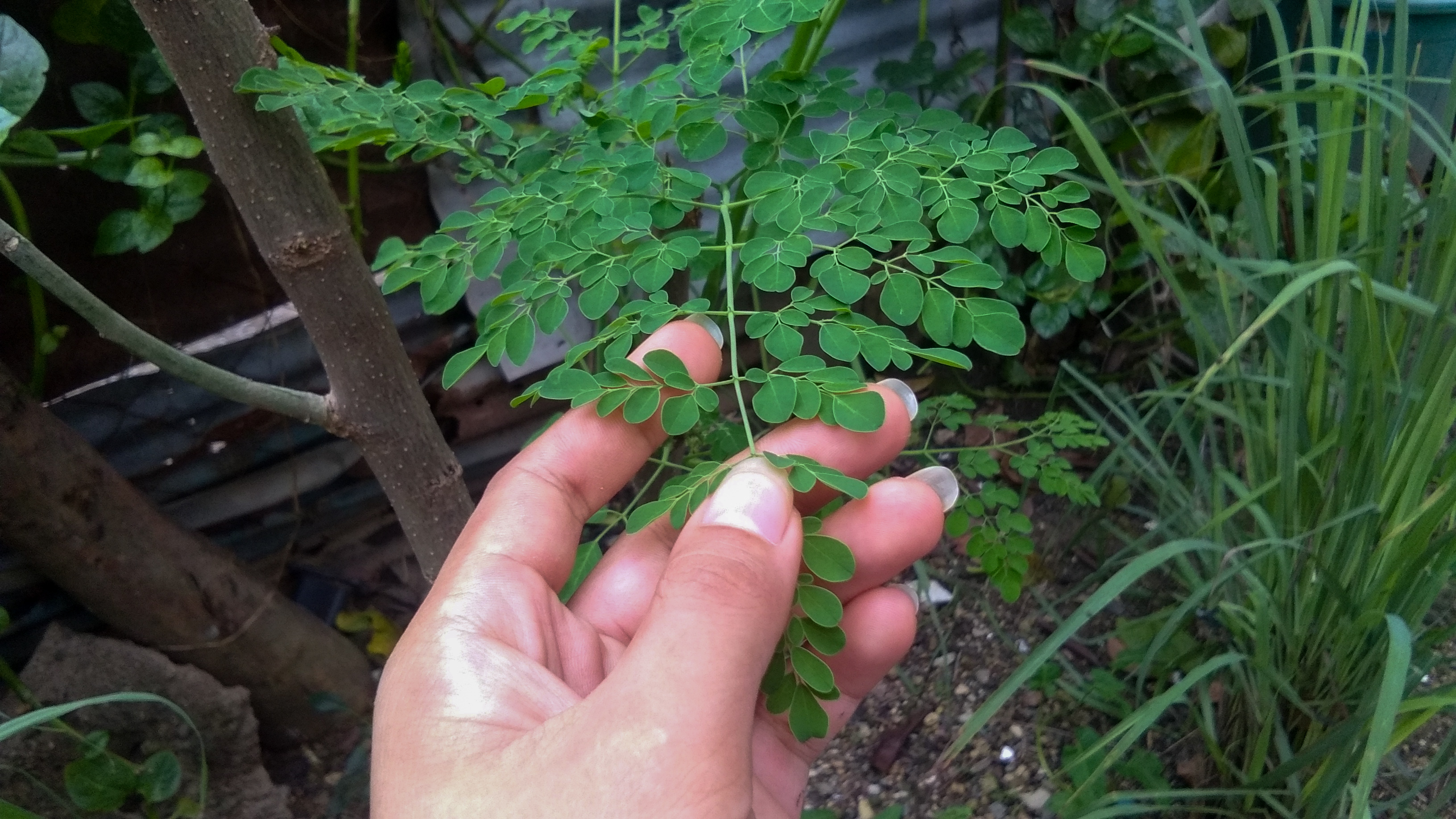
Common name: Malunggay, Moringa, Horseradish
Scientific name: Moringa olifera
Filipinos like to say that malunggay is “the most nutritious plant in the world.” With this going, moringa leaves has been widely used in Filipino cuisines and the most famous is "Tinolang Manok".
Tinolang Manok is a Filipino chicken soup usually served with white rice. Traditionally, this dish is cooked with chicken, wedges of green papaya, and leaves of the siling labuyo chili pepper in broth flavored with ginger, onions, fish sauce, malunggay leaves and more.
According to Britannica Encylopedia, moringa, (Moringa oleifera), also called horseradish tree or drumstick tree, small deciduous tree (family Moringaceae) native to tropical Asia but also naturalized in Africa and tropical America. Flowers, pods, leaves, and even twigs are cooked and eaten. The leaves, which can also be eaten raw when young, are especially nutritious and are high in iron, potassium, and vitamin C. A horseradish-flavoured condiment is prepared from the crushed roots. Ben oil, extracted from the seeds, is used by watchmakers and in cosmetics; perfume makers value it for its retention of scents.


MILLION THANKS FOR REACHING THIS FAR



Hello once again! Heads up hivers! Jenny Mauring here who lives in Mandaue, Cebu City Philippines, 19 years old and soon to be no longer a teenager! I am a self taught artist, if you consider me as one. I am the only daughter of my loving and little uptight parents. Plus, the one and only sister of my naughty, messy and nasty three brothers. I am a student in Cebu Normal University- Main Campus who wishes to complete the program of Bachelor of Secondary Education Major in Science, to cut it short, I want to be a teacher someday. I am a friend to some and strangers to many. I am a lady with light in her eyes, love in her bones and a sucker of artsy and creatives. Come and visit my blog @jmauring to check out my content. You can also connect with me through my Instagram account, that's @jmauring, Jenny Mauring in Facebook and YouTube Channel as well. Stay happy, healthy and crazy.




Hello friend, I congratulate you have a lot of plants, is something to admire, the soursop is a very tasty fruit !
Thanks. Yeah. Soursop is very tasty but I always prefer the jackfruit. 😀
Congratulations @jmauring! You have completed the following achievement on the Hive blockchain and have been rewarded with new badge(s) :
You can view your badges on your board and compare yourself to others in the Ranking
If you no longer want to receive notifications, reply to this comment with the word
STOPDo not miss the last post from @hivebuzz: